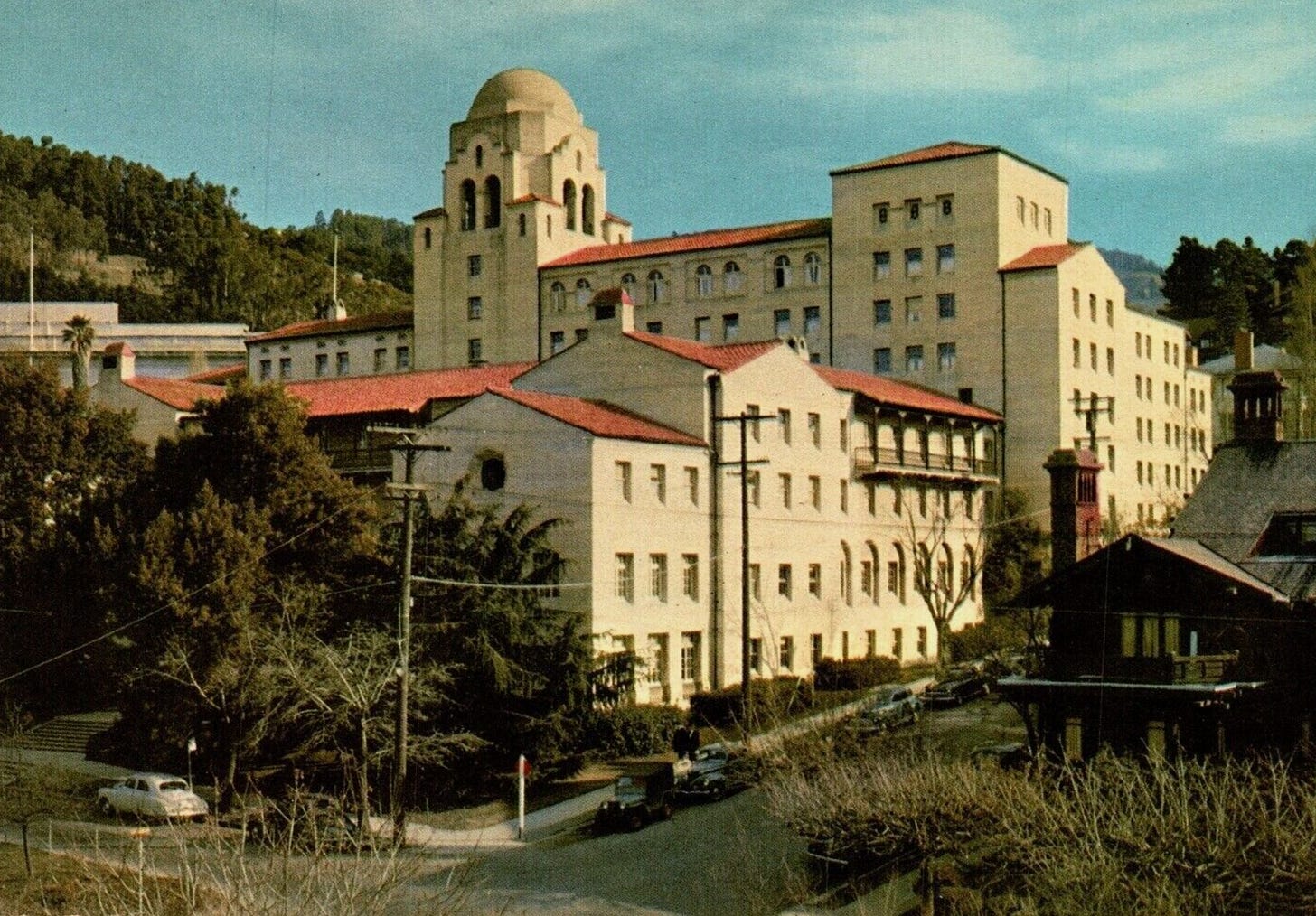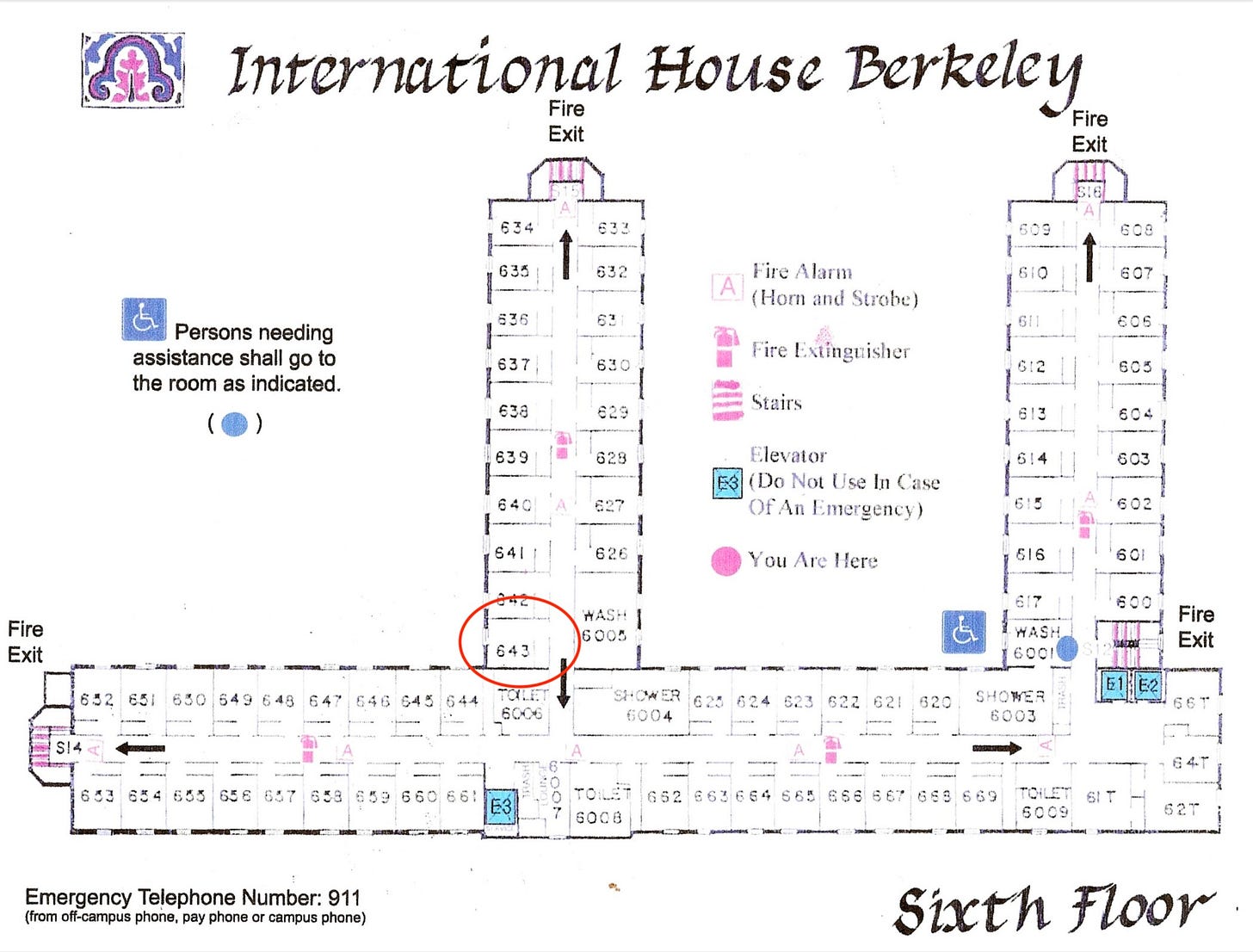Researching my grandfather’s college years has been difficult: he kept few documents from his time at UCLA (1940-1), and even fewer from his years at Berkeley (1941-2). But today, I found a small hint about his life in Berkeley, and now I feel like I can pry open a window into his experiences there.
The hint comes from a postcard written by Opapa’s mother, Margit, on September 21, 1941. I had seen the postcard before, but I had not fully registered that Margit crossed off the original address — 2027 Stanley Hills, Hollywood — and written a new address in pencil: “G. Gerbner, International House, Berkeley, California.”
With that small hint, I finally knew where Opapa lived when he moved to Berkeley in the summer of 1941: he moved into Berkeley’s International House, a residence intended to create community for foreign students — students who frequently felt isolated and alienated.
I felt a small wave of relief: this was a much better place to live than the small room he rented in Los Angeles from U.C. and Lindy Hango.
Once I knew Opapa that lived at Berkeley’s International House, new pieces of evidence started to emerge. While Opapa was absent from the Berkeley yearbooks for 1942 and 1943, I found him listed in the registry of students living at International House in 1941-2. Here, he is identified as a Hungarian in the 3rd year of undergraduate study. He is living in room 643. Surprisingly, his major is listed as Political Science — not Journalism, although Opapa always said that he moved to Berkeley to study Journalism.
This piece of evidence offers new opportunities: I can now reconstruct his living space, and figure out who is neighbors were. I found a floor plan for the 6th floor of International House, showing the room numbers, and I can cross-reference that with the Directory.
Niratana Samathapandhu, from Thailand, is around the corner in room 644: he is a 2nd year studying Mining. Ivan Feng, a 4th year Economics student from California, is in room 641, two doors down from Opapa. Two more Econ students, Souren Avetissian from Armenia, and Mustafa Butun from Turkery, are in room 645 and 647. Alexander Avis, a 3rd year Engineering student from the Netherlands, is in room 649.
I can see that Opapa is not the only Hungarian. There is one other: Agnes Benedek, also in her 3rd year, who is studying Public Health and living on the 4th floor. There are also three Czechs and one Russian.
Incredibly, Berkeley’s International House website includes oral histories with residents of International House from its opening in 1930 until the present day, so I can read descriptions of I-House life in the early 1940s, when Opapa was there. There is also a published history of International House, with photos from the 1930s and beyond. On the website, there is additional information about “featured alumni”. One of the featured residents caught my eye, a woman named Edith Coliver, whose life intersected with Opapa’s in intriguing ways: also a Jewish emigré, she would go on to be a translator at the Nuremberg trials after the war.
What also struck me about Edith is the way she described her life at International House in the early 1940s:
Our greatest pleasure in those days was the folk dance evenings, where students from different, and sometimes hostile, countries danced with each other in friendship and harmony.
Folk dances with students from “different, and sometimes hostile, countries.” Suddenly, a new image of Opapa’s life at Berkeley emerges: these people seem more like him, and the reference to folk dances reminds me of Opapa’s travels to Rimóc, Hungary, and the folk songs he collected.
Berkeley’s International House seems like a place where Opapa’s experiences and knowledge would have been valued and appreciated. Perhaps he showed other students his Hungarian zither. Maybe he felt, at least somewhat, at home.
***
Nuts to crack:
Can I figure out if any of these I-House residents were Opapa’s friends?
Where did Opapa move after International House? He is not listed as a resident in 1942-3.









Wow! It is great to learn where Opapa lived in Berkeley. He must have enjoyed living there. The only thing I knew about his life at Berkeley was that he had a job at a movie theater (you have seen that picture, right?) I also really enjoyed reading about that woman, as well.